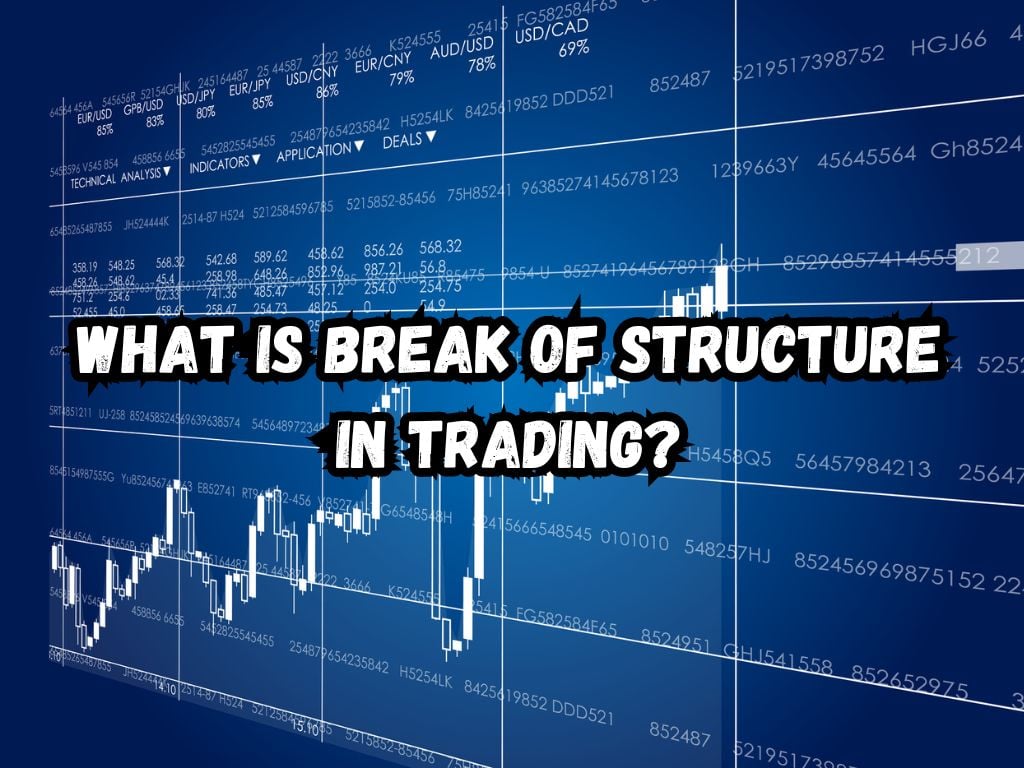In the world of trading, understanding market structures is not just an option; it’s a necessity.
Among the various concepts that illuminate the path to trading success, the Break of Structure (BOS) stands out as a critical marker.
This guide delves into the essence of break of structure in trading. It aims to equip traders with the knowledge to identify, interpret, and leverage this vital market signal.
Understanding Structure in Trading
Market structure forms the backbone of trading analysis. It offers a map of the highs and lows, granting insight into the potential direction of market trends.
The common types of market structures include uptrends, downtrends, and range-bound situations. By identifying these structures, traders can gauge market sentiment and align their strategies with the prevalent trend.
Recognizing market structure is pivotal for traders. It aids in setting up trades, determining stop-loss points, and identifying potential reversal zones.
A solid grasp of market structure paves the way for informed trading decisions, minimizing risks while amplifying potential gains.

What is Break of Structure in Trading?
At its core, a break of structure occurs when the market moves beyond defined boundaries of its current structure, indicating a potential change in trend direction.
This concept serves as a beacon, guiding traders through the ebbs and flows of market sentiment.
When a clear uptrend or downtrend is suddenly reversed, it’s often a sign that the market’s underlying dynamics are shifting. Identifying these moments is crucial for adjusting trading strategies in real-time.
Break of structure is more than a mere swing in price; it signals a fundamental change. It suggests that the dominance of buyers or sellers is being challenged, often leading to significant price movements.
Smart traders keep an eye out for these clues to time their market entries and exits with greater accuracy.
Types of Break of Structure
The realm of break of structure is not monolithic. Primarily, there are two types: horizontal and diagonal.
Horizontal BOS happens when the price breaks through a clear-cut support or resistance level. This type is straightforward and is often validated by significant price movements.
Diagonal BOS, on the other hand, involves trend lines. Here, the price breaks out of an upward or downward sloping trend line, suggesting a shift away from the prevailing trend.
Recognizing which type of break you’re dealing with is crucial. It impacts not just the entry strategies but also where to set your risk management protocols.
Trading Strategies for Break of Structure
When it comes to harnessing the power of break of structure in trading strategies, preparation is key. First and foremost, it’s essential to have a clearly defined strategy for trading breakouts.
This involves setting precise entry points after a break of structure is confirmed. Patience pays off here, as premature entries can lead to false breakouts.
Risk management cannot be overstressed. Setting stop-loss orders just outside the break of structure zone can help manage potential losses if the market moves against your expectations.
Additionally, defining clear take-profit levels based on previous support or resistance levels can maximize the effectiveness of your trading strategy. Pro tips for trading break of structure include waiting for additional confirmation before entering a trade.
This might come in the form of a retest of the broken level or other technical indicators signaling a continuation of the new trend. Always keep in mind, the goal is not to catch every break but to trade those with the highest probability of success.

Frequently Asked Questions
What is the difference between break of structure and support/resistance levels?
While both concepts are vital for market analysis, a break of structure refers to a clear and significant move beyond a trend or level, signaling a potential change in market direction.
Support and resistance levels, however, denote specific price points that historically have prevented the price from moving higher or lower.
How do I identify a break of structure in a chart?
Identifying a break of structure involves spotting a price movement that decisively crosses and closes beyond a defined trend line or level. This can be an uptrend line, a downtrend line, or horizontal levels of support and resistance.
Can break of structure be applied across different trading markets?
Yes, the concept of break of structure is universal and can be applied across various trading markets, including Forex, stocks, and cryptocurrencies. The underlying principle of market dynamics remains consistent, regardless of the asset class.
Conclusion
Break of structure is a guiding light in the tumultuous seas of trading. It offers a glimpse into the underlying forces at play, signaling potential shifts in market direction.
By mastering the concept of break of structure, traders can enhance their ability to navigate the markets, making informed decisions that align with the ever-changing landscapes of supply and demand.
As with any trading strategy, the key lies in education, practice, and patience. The break of structure is a powerful tool in a trader’s arsenal.
When used correctly, it can unlock doors to new opportunities and heightened market understanding. Keep exploring, keep learning, and may your trading journey be both successful and enlightening.


 Tags:
Tags:










